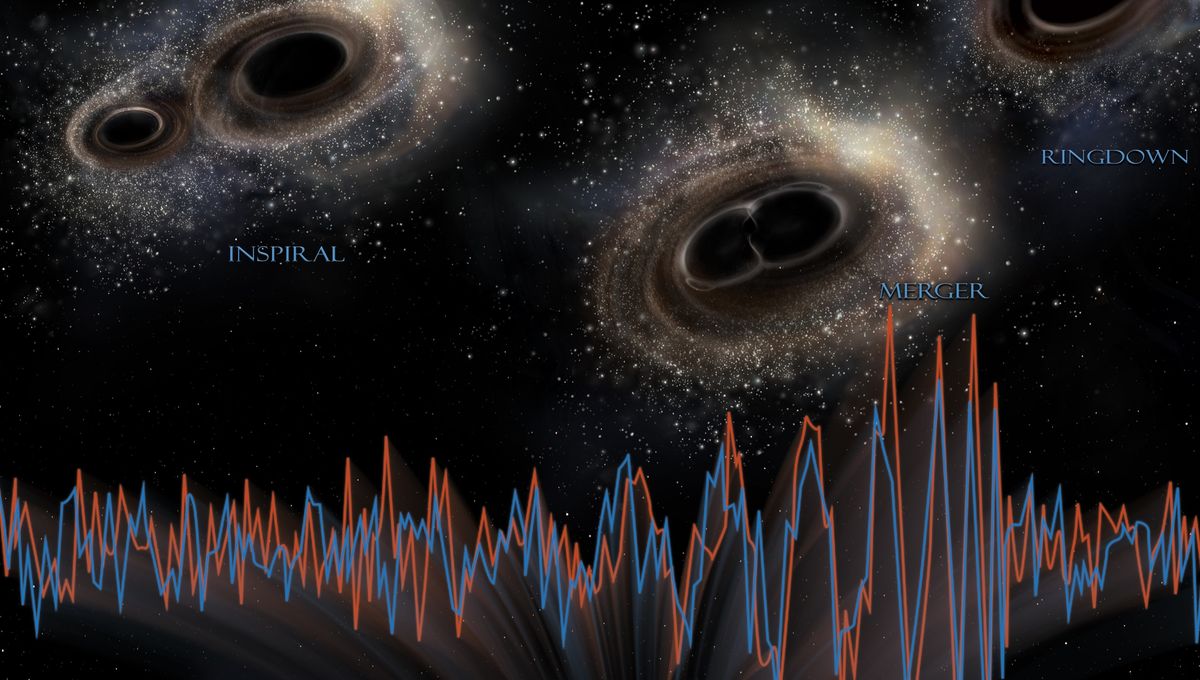
Gravitational waves are perfectly suited to be turned to sound. The little chirp, the moment the collisions happen, it has already turned into little sounds. My ringtone, on the rare occasions my phone has sound, is one of those chirps. Now, the team at Audio Universe has taken the gravitational wave data to a whole new level.
Making things accessible actually makes them better for everyone.
Rose Shepherd
The visualization and sonification are brilliant in a 3D video where the sounds of gravitational waves hit you from the direction in the sky it is estimated that they have come from. As you move around with your mouse, phone, or VR headset, you can be pelted with the tiny vibrations in space-time.
Similar to other sonification projects, it provides a way for blind and vision-impaired people to participate in astronomy, complementing other approaches such as the Tactile Universe. But there are more motivations than just that.
“There are three reasons why we want to do this. It helps researchers to explore complex multi-dimensional datasets. It could be used to create immersive and engaging educational resources. And it can make astronomy more accessible, which is obviously really important,” Rose Shepherd, from Newcastle University, told IFLScience. “Making things accessible actually makes them better for everyone.”
A particularly interesting aspect of sonification for research is being able to listen to the emission lines of celestial objects. The peaks in the light spectrum of a particular body spread out as the object moves, and sonification can turn something so visually subtle into something blatantly obvious to the ear.
But it’s not just useful in astronomy. The team has looked at how different datasets can be improved by adding an audio element. One interesting example is Warming Stripes. This is a minimalist graphic that use a series of colored stripes – blue to red – to represent temperature anomalies over the years. The left side represents decades ago, and as we get to the right side, the stripes get redder and redder. Great to visualize the unfolding climate crisis, and now audio adds a bit more to it.
“Using sounds, it can add an emotional interpretation to your data. You can use that to convey certain feelings to the data,” Shepherd explained. “ With [the Warming Stripes sonification], we were not trying to make people feel stressed but it was interesting to see people’s reactions compared to just looking at the video.”
Audio Universe is designing a Sonification Toolkit that can be used by many to create bespoke resources.
Shepherd presented the work of Audio Universe at this week’s National Astronomy Meeting at the University of Hull.
Source Link: Watch And Listen To Gravitational Waves Arriving From Every Direction Of The Universe